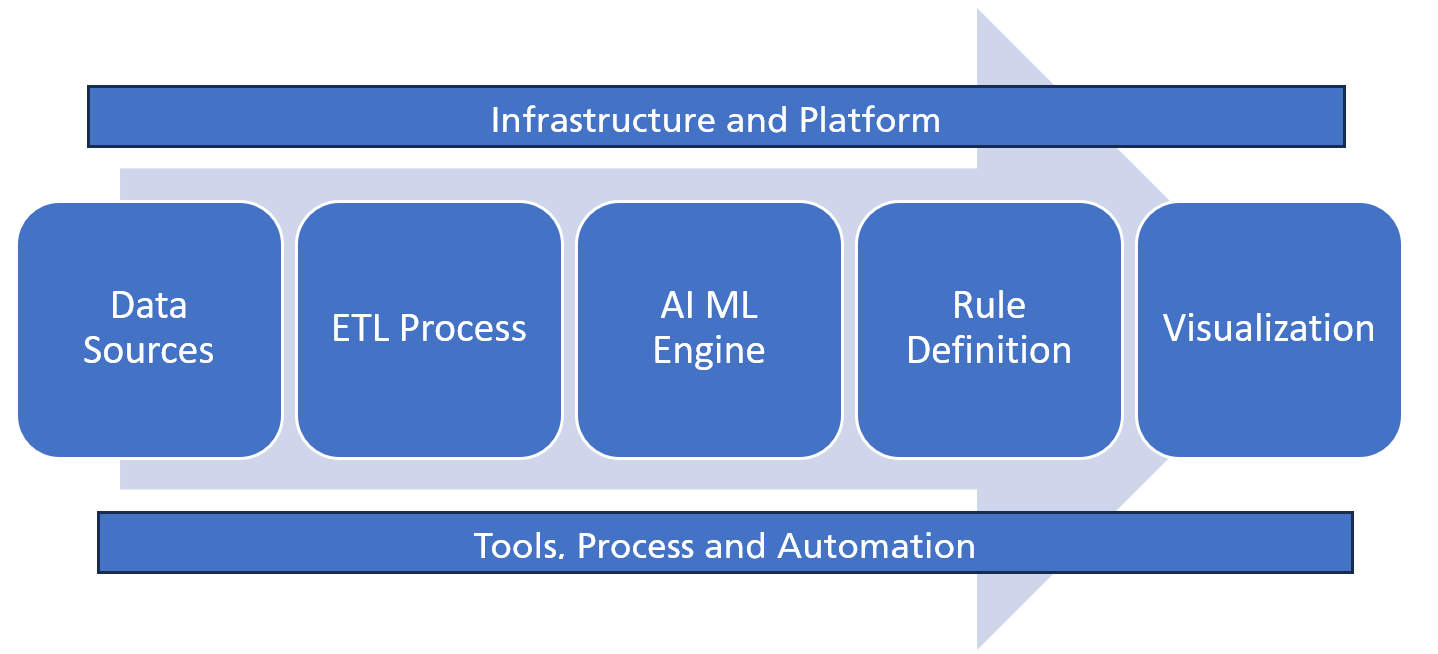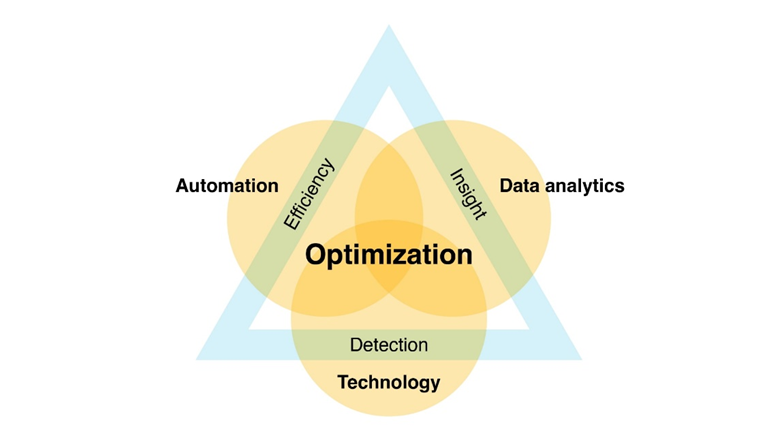Create Efficient Solutions by Driving Automation in Data Analytics
Introduction
Data, considered the oil of modern-day industries, is full of raw information which, when processed, can generate extensive insights. According to the latest estimates almost 327 million terabytes of data are created every day, and increase by 29% in coming year that results in triple the amount of data by the end of current decade, therefore, by this rate the entire decade average will shoot up to four times, but it might be higher with the advent of generative AI capabilities. This creates an emerging need for automation to process this data and provide useful information from it. Processing systematic analysis of data and creating patterns, interpretations, and meaningful insight is known as data analytics. While use of automated or computerized systems to perform data analytics processes or with minimal manual intervention is known as automated data analytics.
Storytelling with data
Everyone has seen movies or series based on books, but a very small number of people have gone through their original source materials. This is a classic example of data analytics because one cannot sit and process data for days to gain insights that might be useful. Thus, if someone goes through the same data in a visual/tabular format, filtering the right information gets easier and simpler. The addition of generative AI in the same landscape helps us understand how effective one can be when processing data through simple interfaces. Now, imagine the same storybooks being processed through an engine to produce a transcript or a multimedia-based output that helps you go through the same experience that you have going through the movie or series. This is the automated data analytics approach creates a data explosion.
Automated data analytics
Complete automated project combines data engineering and data analytics with the supervision of a data architect and the data science team that helps to create a compatible Artificial Intelligence (AI) – Machine Learning (ML) engine as per requirement. Other teams to compliment the entire automated data analytics system can consists of Business Analysts, Program Managers and Implementation/SRE teams.

Automated Data Analytics is a continuous systematic sequenctial process. Following ingestion of data, it is cleaned and made into a structured format so that it could be used in AI ML Engine or to gain insight. Generating a baseline from inteligent engine it is then tuned by rule or logic based process to generate end user based insights. Entire process is supported with Tools, Infrastructure and its assisted process.
Understanding automation in data analytics
Templates, process, methods to convert any exisitng project to an automated one, companies or managers can define the entire framework from the initial process to the last process by:
- Defining objectives and scope to understand the questions the business wants to answer and the insights companies or stakeholders can gain from the data.
- Collecting and integrating data through a purely engineering process and automating the process using Extract, Transform, Load (ETL) tools to gather data from databases, APIs, files, or other repositories.
- Automating the cleaning and preprocessing to handle missing values, outliers, and inconsistencies. Using scripts or tools to automate data cleaning tasks is important as every time manual intervention cannot be done.
- Storing and managing data through a centralized data storage system.
- Using automated analysis tools or scripting languages as per the skillset of available engineers to build automated systems that include statistical software, programming languages (e.g., Python, R), and machine learning frameworks.
- Implementing machine learning models, which fits best as per requirement. Training models on historical data to automate model deployment and update it when required.
- Leveraging automated visualization tools to create dashboards and reports. Tools like Tableau, Power BI, or custom scripts can automate the generation of visualizations.

- Automating alerting systems to notify stakeholders of significant changes or anomalies in the data, ensuring timely responses to emerging trends or issues and reducing the downtime as well.
- Implementing iterative improvements to monitor and evaluate the performance of automated processes and improve algorithms, models, and data processing based on feedback and changing business requirements.
- Documenting and sharing knowledge that helps retain the entire framework for a longer run. Documenting every automated process and sharing knowledge with the team for maximum clarity so that any knowledge must not be skipped.
Ensuring security and compliance is crucial to protecting sensitive data and ensuring compliance with relevant regulations and policies. Collaboration and communication between the entire project team can effectively address any small changes or detail any technical or functional processes. Both are important factors and every team member should do it proactively.
Applications and advantages
There are many advantages to using automated data analytics applications with correct engineering practices. Here are some of its applications and benefits:
- Implement automated analytics tools to process and analyze data in real-time and enable stakeholders and board members to make informed decisions promptly and respond swiftly to market changes and emerging opportunities.
- Integrate ML algorithms for predictive analytics and strategic planning that empower organizations to forecast trends, anticipate customer behavior, and proactively strategize for the future.
- Utilize automated tools to create personalized and customized dashboards and reports to provide stakeholders and board members with tailored insights, focusing on Key Performance Indicators (KPIs) relevant to their roles and responsibilities.
- Automate data processing to reduce manual efforts for cost efficiency and resource optimization that will lower operational costs, optimize resources, and allow personnel to focus on higher-value tasks, fostering efficiency.
- Deploy scalable, automated analytics solutions for growing data volumes that ensure the ability to handle growing datasets without compromising on analysis speed or accuracy, supporting business expansion.
- Implement automated processes to reduce human errors for enhanced accuracy and consistency to ensure trust in the insights derived and minimize the risk of decision-making.
- Integrate data from various departments and sources for better cross-functional insights that provide a holistic view of the organization.
- Implement automated systems with built-in security measures and compliance checks to safeguard sensitive business data, ensuring compliance with regulatory requirements and industry standards.
- Choose automated analytics tools with intuitive and user-friendly interfaces for efficient accessibility, facilitating those without a technical background.
- Set up automated monitoring processes to track key metrics with continuous monitoring and feedback to establish a continuous feedback loop.
- Use automated tools to create visualizations for better communication and strategic insights, and quickly create a visualization to enhance communication.
Conclusion
Automation in data analytics streamlines processes enhances accuracy and accelerates insights. By leveraging advanced tools and automated processes, organizations can optimize data handling, reduce manual errors, and foster efficiency. This holistic approach to automation not only improves productivity but also empowers to focus on strategic decision-making, ultimately driving overall effectiveness and additional edge to create solutions and applications.
[i]Amount of Data Created Daily by Fabio Duarte, Exploding Topics San Francisco, California, published on December 13, 2023, https://explodingtopics.com/blog/data-generated-per-day
More from Divyanshu Singh
Introduction In the dynamic landscape of contemporary business, the use of automated data…
Latest Blogs
Introduction What if training powerful AI models didn’t have to be slow, expensive, or data-hungry?…
Pharmaceutical marketing has evolved significantly with digital platforms, but strict regulations…
Leveraging the right cloud technology with appropriate strategies can lead to significant cost…
Introduction The financial industry drives the global economy, but its exposure to risks has…




